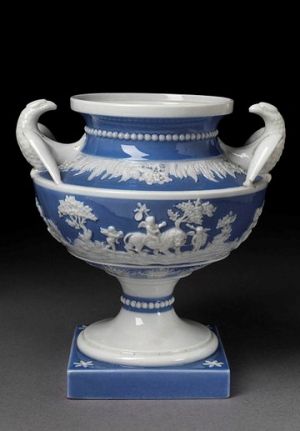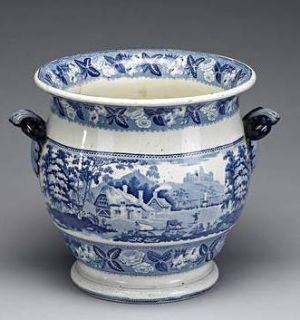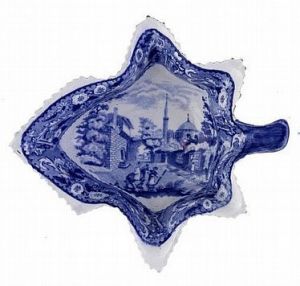John & William Ridgway
|
John and William joined their father at the Cauldon Works, and in 1808 Job gave them an equal share in the business.[vii] The whole family had a strong commitment to Methodism, William Smith, and George and Job Ridgway had been followers of Alexander Kilham and were founding members of the Methodist New Connexion. They led a campaign to build a new place of worship on the site of Smith’s former home in Albion Street, Hanley. Bethesda Methodist Chapel was an ambitious project. Known as the Cathedral of The Potteries it had a seating capacity of 3,000 and it was in 1814 while attending celebratory opening services that Job was taken ill and died. His sons continued their father’s pottery business and his devotion to Methodism. Both William and John traveled to Canada and to America on a number of occasions, William primarily to attend Methodist conventions and John to do business. No doubt both brothers benefited by their transatlantic spiritual and business connections. For details of John Ridgway's visit to America in 1822 click here John and William were left to run Cauldon Place by themselves and soon extended their ceramic empire by renting the Bell works from their uncle George Ridgway who decided to give over business after his two oldest sons had died. By 1815, John & William Ridgway were operating two large factories, the Bell Works and Cauldon Place. They worked together for 15 years until in 1830, like their father and uncle before them, they amicably split, John keeping Cauldon Place and William taking the Bell pottery. Their products, between 1815 and 1830 included fine bone china, stone china, stonewares, and earthenware and many marked pieces survive attesting to the high quality of their work. Their blue printed pottery comprised several series of designs including “Beauties of America” produced after a visit by John Ridgway to the United States. He kept a diary of his visit and mentioned descriptions of some the buildings he visited which appear on his printed wares. more+ Both John and William continued to work independently after 1830. In 1810, John had married Sophia Bale of Bristol, to whom he was devoted; they had no children but in later years nephews lived and worked with him[viii]. In 1854 Sophie died, four years later John retired from the pottery business and died in December 1860. William married Ann Sharp of Derbyshire; their son Edward John Ridgway joined his father in the pottery business. William entered into many partnerships and was involved in as many as six different factories before stretching himself too far and succumbing to bankruptcy in 1849. He died in 1864; his obituary cited him as “enterprising but lacking caution”.[ix] Both men made significant contributions to their community, considered progressive master-potters they were at the center of local movements aiming at social and political reform. Looking to make changes in a moderate and orderly manner they were prime movers in developing a savings bank, building a British School, advocating Parliamentary reform – their political opponents labeled them “The Radical Saints of Hanley”.[x]
[i] The third son Joseph died in infancy, daughter Hannah married a Mr. Bale who was likely the brother of Sophie Bale who married John Ridgway [ii] It
is estimated that George & Job Ridgway began at the Bell Works in about
1791, based on the evidence of the Memoirs of Job Ridgway. Published as an
appendix in Godden, Geoffrey A. 1972. The illustrated guide to Ridgway
porcelains. London: Barrie and Jenkins. |
 Bone china vase Job Ridgway & Sons about1810 Bone china vase Job Ridgway & Sons about1810©Victoria and Albert Museum, London  Slop pail from Toilet-set, "British Scenery" Slop pail from Toilet-set, "British Scenery" John & William Ridgway ©Victoria and Albert Museum, London  pickle dish "Ottoman Empire" Series pickle dish "Ottoman Empire" SeriesJohn & William Ridgway |

 John and William were the oldest of four children born to
Job and Elizabeth Ridgway
John and William were the oldest of four children born to
Job and Elizabeth Ridgway